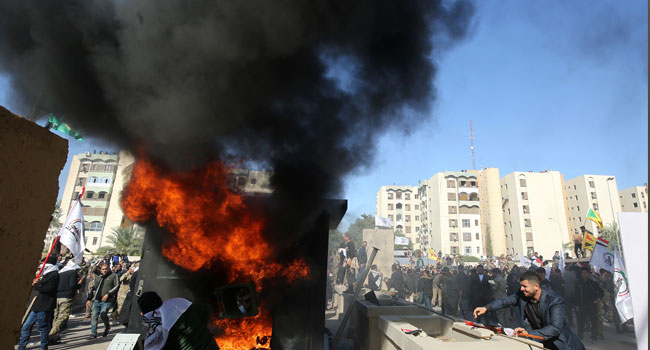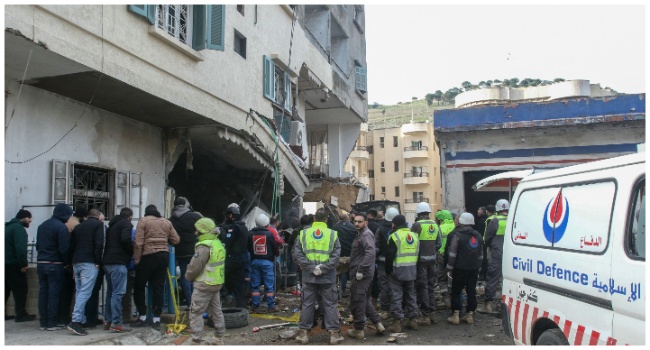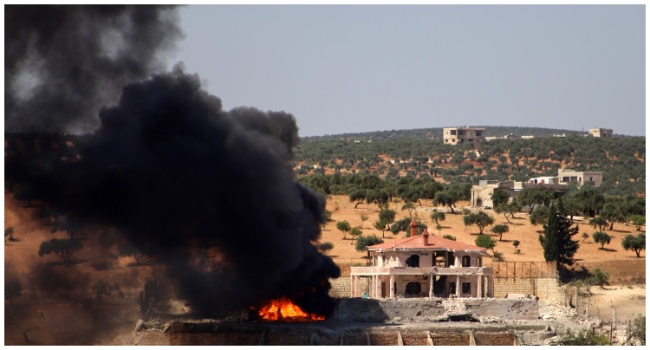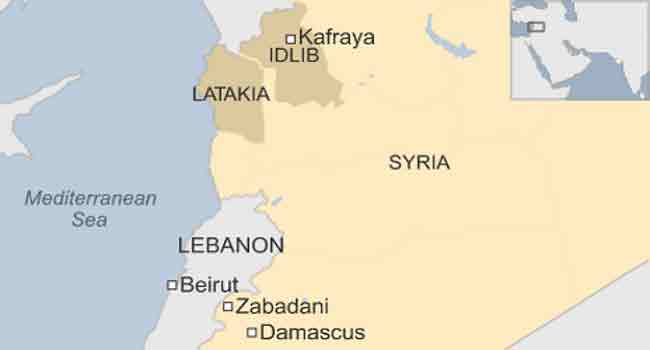
Syria’s war began as a peaceful uprising that was swiftly crushed in a regime crackdown. Almost nine years on, more than 380,000 people have died, and millions more have fled.
After Russian President Vladimir Putin — a key ally of Damascus — on Tuesday made a surprise visit to the country, here is a summary of the main events in the conflict:
Revolt to repression
In March 2011, protests break out to demand political change after four decades of repressive rule by the Assad dynasty.
President Bashar al-Assad’s regime cracks down on demonstrations but rallies continue.
In July an army colonel who has defected from the military sets up the Turkey-based opposition Free Syrian Army (FSA).
An armed rebellion erupts, with support from western and Arab countries. The rebels seize key territory, including large swathes of third city Homs and a chunk of the ancient city of Aleppo.
Air strikes
In 2012 regime forces step up their crackdown, carrying out bloody operations, notably in the central city of Hama, a bastion of opposition to the Assad regime.
In July FSA fighters launch a battle for Damascus but the government holds firm.
From 2013 regime helicopters and planes unleash air strikes, some of them using barrel bombs, on rebel zones.
The same year Iran-backed Lebanese Shiite militant group Hezbollah confirms it has deployed fighters to back Syrian government forces.
Iran also boosts its support for Assad.
Chemical attack
On August 21, 2013, chemical attacks blamed on the regime on two rebel-held areas near Damascus reportedly kill more than 1,400 people. The regime denies the charge.
Then US president Barack Obama pulls back from threatened punitive strikes on Syrian regime infrastructure, instead of agreeing a deal with Moscow that is meant to dismantle Syria’s chemical weapons arsenal.
Islamic State group
In June 2014, the jihadist Islamic State group proclaims a “caliphate” over territory it has seized in Syria and Iraq.
In September a US-led coalition launches airstrikes against IS in Syria.
The strikes benefit Kurdish groups, who since 2013 have run autonomous administrations in Kurdish-majority areas.
Kurds join with Arabs to form the US-backed Syrian Democratic Forces (SDF).
They oust IS from key areas including the jihadists’ de facto capital Raqa in 2017, and then in 2019 their last Syrian holdout, the village of Baghuz.
In October IS leader Abu Bakr al-Baghdadi is killed during a US special services operation in northwestern Syria.
Russia steps in
In September 2015 Russia launches airstrikes in support of Assad’s troops, in a campaign that will prove to be a turning point in the war.
In a string of deadly campaigns, the regime retakes key rebel bastions, from Aleppo in 2016 to Eastern Ghouta in 2018.
US strikes
In April 2017 a sarin gas attack on the rebel-held town of Khan Sheikhun kills more than 80 people.
US President Donald Trump unleashes missile strikes against the regime’s Shayrat airbase.
In April 2018, the US, with the support of France and Britain, launches retaliatory strikes after an alleged regime chemical attack on the then rebel-held town of Douma, near Damascus.
Turkish offensive against Kurds
On October 9, 2019, Ankara launches an offensive targeting Kurdish forces in Syria, whom it brands “terrorists” linked to Kurdish insurgents in Turkey.
It follows Washington’s decision to withdraw US forces from the Turkey-Syria border area.
Turkey and its Syrian proxies have since taken a 120-kilometre by 30-kilometre stretch of the border.
Battle for Idlib
Since mid-December, the Syrian regime and its ally Russia have ramped up their bombardments of Idlib province in the northwest, involving ground battles with jihadists and rebels.
Damascus vows to reconquer the region, run by the powerful Hayat Tahrir al-Sham (HTS) jihadist alliance, led by Syria’s former Al-Qaeda affiliate.




